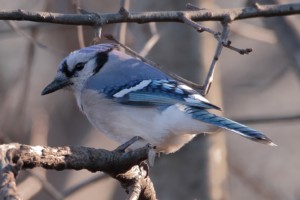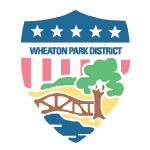CITIZEN SCIENCE WORKSHOPS HELP CONSERVE LOCAL SPECIES AT COSLEY ZOO
FOR IMMEDIATE RELEASE
CONTACT: Brett Peto
Wheaton Park District
630.510.4987
[email protected]
January 26, 2017
Wheaton, Ill.—Cosley Zoo (1356 N. Gary Ave., Wheaton, Ill.) is home to animals representing 32 species of bird and three species of frog, but this winter and spring, staff will provide workshops to help citizen scientists gather data on species outside the zoo’s five acres.
On February 11, 2-4P, Educator & Teen Specialist Jackie Karnstedt will lead Cosley Zoo’s first-ever workshop training the public to contribute to the Great Backyard Bird Count (GBBC), an effort launched by the Cornell Lab of Ornithology and National Audubon Society in 1988 to record bird populations worldwide. More than 160,000 people participated last year.
“Scientists can’t be everywhere at once, so they’re reaching out to citizen scientists to be their eyes and ears and get a snapshot of what birds are doing all over the world,” said Jackie Karnstedt. “That can help them study population trends, how weather is affecting birds, or migration.”
The workshop will cover practicality and purpose for when GBBC goes live February 17-20.
“We’ll go over what
The time commitment can be as little as 15 minutes per day, spotting species like the dark-eyed junco, often seen during winter throughout the upper Midwest, songbirds, and “if you’re in Chicago, you may even see a parakeet.”
“Hyde Park has a population of monk parakeets,” Karnstedt said. “The first was discovered there in the early 1970s. They’ve established a regular population around the University of Chicago, which has taken them under their wing, no pun intended.”
Small birds are significantly more adaptable than many ground-based species.
“They’re building nests on buildings and roofs instead of trees,” said Karnstedt, “and because they spend more time higher up than people, they’re not impacted as much by grasses being mowed. Hawks and owls need that open space, but the little ones seem to squeeze in.”
Patience, practice, and identification are the cornerstones of successful birdwatching, which has a devoted following not shared for some other groups of animals.
“I think it’s because there are so many species of birds and there are migratory species, so you can see something completely different from other times of year,” she said.
Karnstedt started birdwatching as an undergraduate in Iowa, partly because of availability.
“Sometimes animals are tricky to find, and birds are something you can go out and see every day,” Karnstedt said. “If your brain’s trained to look and listen for them, you’ll find them more and more often. I like that you can find them.”
Contact Natasha Fischer at [email protected] to register for the Great Backyard Bird Count workshop. All ages welcome. $7 per person; $20 per household or group.
At two workshops for FrogWatch USA on March 24, 6-8P and April 30, 3-5P, the public can learn how to locate a harder-to-find sort of species: frogs.
A citizen science program of the Association of Zoos & Aquariums (AZA), FrogWatch USA invites individuals and families to learn about wetlands and help amphibians by reporting the calls of local frogs and toads during the breeding season spanning February through August.
The zoo’s chapter started in 2012, said Zookeeper Alison LaBarge, and has welcomed more volunteers each year.
“More than anything else, I would say the FrogWatch [USA] program is about education and awareness,” she said. “It enables individuals to learn more about their local wildlife and wetland habitats, and what makes these things important.”
During the workshops, guests can become familiar with frog and toad calls and learn appropriate monitoring protocols, how to find a wetland site suitable for monitoring, and how to document their findings.
“The collected data is submitted through a National Geographic mapping program called FieldScope,” LaBarge said. “The information can then be compiled by AZA. The nice thing about FieldScope is that anyone can view the data there, so it does have the potential to inform amphibian researchers about current population trends.”
Registration for both FrogWatch USA workshops is available by emailing [email protected].
To learn more about Cosley Zoo’s citizen science workshops, visit cosleyzoo.org/conservation. For more information about the Great Backyard Bird Count, visit gbbc.birdcount.org, and to see how FrogWatch USA conserves amphibian species, visit aza.org/frogwatch.
 Three workshops at Cosley Zoo (1356 N. Gary Ave., Wheaton, Ill.) will train individuals and families to participate in two citizen science programs this winter and spring: the Great Backyard Bird Count and FrogWatch USA. Training for the Great Backyard Bird Count is February 11, 2-4P and trainings for FrogWatch USA are March 24, 6-8P and April 30, 3-5P. Photo courtesy of John Tobias.
Three workshops at Cosley Zoo (1356 N. Gary Ave., Wheaton, Ill.) will train individuals and families to participate in two citizen science programs this winter and spring: the Great Backyard Bird Count and FrogWatch USA. Training for the Great Backyard Bird Count is February 11, 2-4P and trainings for FrogWatch USA are March 24, 6-8P and April 30, 3-5P. Photo courtesy of John Tobias.

